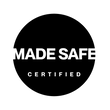
Why It Matters
1,4-dioxane is a carcinogenic contaminant that can be found in personal care and household care products which contain ingredients that undergo a process called ethoxylation. Because it is a contaminant and not an added ingredient, you won't find it listed on labels.
What Is It?
1,4-dioxane (sometimes just called dioxane) is an expected contaminant from a process called ethoxylation, when ethylene oxide is added to other ingredients to make them less harsh. A good example of this is sodium lauryl sulfate (SLS), which is harsh on skin. It’s often ethoxylated to convert it to sodium laureth sulfate; 1,4-dioxane is created in the process and contaminates the sodium laureth sulfate (SLES).[1]

Where It's Found
1,4-dioxane is found in products from personal care to laundry detergent, but it’s not an intentionally-added ingredient. It’s a contaminant that’s created when certain common ingredients are mixed together.[8] 1,4-dioxane is most often found in products that suds, like shampoos, shower gels, dish soaps, and laundry detergents. It has also been found in toothpastes, mouthwashes, deodorant, and hair dyes.
The Health Concern
1,4-dioxane is listed as a known or probable carcinogen by several scientific agencies, including appearing on California’s Proposition 65 list as linked to cancer,[7] as a known animal carcinogen[6] by the National Toxicology Program, and as a likely human carcinogen by the U.S. Environmental Protection Agency (EPA).[5] According to the EPA, it’s also present in groundwater, ambient air, and indoor environments, in addition to showing up in products we use on a daily basis.
In 2016, it was placed on the EPA’s list of top ten chemicals for evaluation under the updated Toxic Substances Control Act.[3] The EPA was required to review these chemicals to determine “whether they present an unreasonable risk of injury to health or the environment.” The EPA released its final risk evaluation of 1,4-dioxane in 2020 and identified no unreasonable risk to consumers.[2] However, there are sufficient data gaps in the carcinogenicity of 1,4-dioxane from dermal exposure in both humans and animals. As part of the 360° Ecosystem Approach Screening, MADE SAFE applies the precautionary principle when assessing products for safety. This means all ingredients are ‘guilty until proven innocent’. As such, MADE SAFE does not permit 1,4-dioxane in certified products due to its classification as a likely carcinogen by multiple agencies.
1,4-dioxane is also listed as hazardous waste under the Resource Conservation and Recovery Act (RCRA).[4] The FDA permits vacuum stripping as a method for the reduction of 1,4-dioxane from ethoxylated compounds, but this does not fully remove dioxane from the final product.[9] MADE SAFE does not permit products that have undergone vacuum stripping to remove 1,4-dioxane. Any dioxane removed in this process can potentially be released into the environment as hazardous waste, and residual levels of the substance can still remain in the product. Instead, MADE SAFE supports the use of safer alternatives that do not require ethoxylation in the first place.
How to Avoid It
Read labels on products like shampoo, bubble bath, liquid soaps, and laundry detergents to avoid 1,4-dioxane. It won’t appear on ingredient lists because it’s not intentionally-added; however, you can avoid the chemicals that are commonly contaminated with it.
- Avoid PEG compounds, which are usually listed as “PEG” followed by a number on labels.
- Skip polysorbates, ingredients that are listed on labels as “Polysorbate” followed by a number.
- Look for and avoid chemicals that end in “oxynol” or “eth”, as this denotes ethoxylation. Examples include: ceteareth, oleth, and laureth.
- Shop MADE SAFE Certified products.
References
[1] Ade-Browne, C., Mirzamania, M., Dawn, A., Qian, S., Thompson, R.G., Glenn, R.W., Kumari, H. (2020). Effect of ethoxylation and lauryl alcohol on the self-assembly of sodium laurylsulfate: Significant structural and rheological transformation. Colloids and Surfaces A: Physicochemical and Engineering Aspects. 595.
[2] Environmental Protection Agency (EPA). (2020). Final Risk Evaluation for 1,4-Dioxane.
[3] Environmental Protection Agency (EPA). (2016). Chemicals Undergoing Risk Evaluation under TSCA. Office of Chemical Safety and Pollution Prevention.
[4] Environmental Protection Agency (EPA). (2017). Preliminary Information on Manufacturing, Processing, Distribution, Use, and Disposal: 1,4-Dioxane. Office of Chemical Safety and Pollution Prevention.
[5] Environmental Protection Agency (EPA). (2013). Toxicological review of 1,4-dioxane. Washington, DC.
[6] National Toxicology Program (NTP). (2016). Fifteenth report on carcinogens. National Institute of Environmental Health Sciences. National Institutes of Health.
[7] Office of Environmental Health Hazard Assessment (OEHHA). Chemicals considered or listed under proposition 65: 1,4-dioxane. California Environmental Protection Agency.
[8] Saraji, M. and Shirvani, N. (2017). Determination of residual 1,4-dioxane in surfactants and cleaning agents using headspace single-drop microextraction followed by gas chromatography-flame ionization detection. International Journal of Cosmetic Science. 39: 36-41.
[9] U.S. Food and Drug Administration (FDA). (2019). 1,4-Dioxane in Cosmetics: A Manufacturing Byproduct.
If you found this post valuable, please share it below. Follow us on social to let us know what you like, what you need, and what you want to see more of. Also, don’t forget to ask the companies making your favorite products to become #MADESAFE Certified. Remember, your voice matters!
